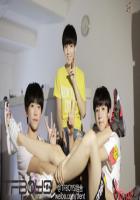Turning, now, to a consideration of the seance, we find that many of these psychological rules still hold good, and their operation enables the medium to perform many actions which would otherwise be impossible. A certain suggestion is given to the sitters, and imagination and inference do the rest. "Our conclusions as to what we see or hear are always founded on a combination of observation and inference; but in daily life it is seldom necessary to distinguish between the two elements, since, when the object and its mode of presentation are familiar, our inferences are generally correct. But it is different when, owing to circumstances, such as a bad light, we have to infer more in proportion to what we perceive than usual; or when some one, e. g., a conjurer or a ventriloquist, is trying to deceive us by presenting one object under the familiar aspect of another, and suggesting false inferences. It is not uncommon to find people at seances encouraging each other in the belief that they see, say, a living human figure, when all that they actually SEE is something moving which is about the size of a human being; the rest is inference."
How true these last remarks are is demonstrated by the statement, made in The Revelations of a Spirit Medium, that an old wire mask frequently used at materializing seances had been recognized "by dozens of persons as fathers, mothers, sisters, brothers, cousins, sweethearts, wives, husbands, and various other relatives and friends. None but the medium knew that it was only a fifty-cent wire mask, hence none but the medium could enjoy the humor of the occasion."
One of the most instructive incidents I know, in relation to this question of the psychology of deception, is the one given by Doctor Hodgson[1]--the case of the officer and the Hindu juggler. In this case, a trick was performed before an English officer and his wife, and Doctor Hodgson happened to overhear this officer telling some travelers of the experience at dinner that evening. "Referring to the movements of the coins, he said that he had taken a coin from his own pocket and placed it on the ground himself, yet that this coin had indulged in the same freaks as the other coins. His wife ventured to suggest that the juggler had taken the coin and placed it on the ground, but the officer was emphatic in repeating his statement, and appealed to me for confirmation. He was, however, mistaken. I had watched the transaction with special curiosity, as I knew what was necessary for the performance of the trick. The officer had apparently intended to place the coin upon the ground himself, but as he was doing so, the juggler leaned slightly forward, dexterously and in a most unobtrusive manner received the coin from the fingers of the officer, as the latter was stooping down, and laid it close to the others. If the juggler had not thus taken the coin, but had allowed the officer himself to place it on the ground, the trick, as actually performed, would have been frustrated.
[1] Proceedings Society for Psychical Research, Vol. IV., pp. 385-6.
"Now I think it highly improbable that the movement of the juggler entirely escaped the perception of the officer; highly improbable, that is to say, that the officer was absolutely unaware of the juggler's action at the moment of its happening; but I suppose that, although an impression was made on his consciousness, it was so slight as to be speedily effaced by the officer's IMAGINATION of himself as stooping and placing the coin upon the ground. The officer, I may say, had obtained no insight into the modus operandi of the trick, and his fundamental misrepresentation of the only patent occurrence that might have given him a clew to its performance debarred him completely from afterwards, on reflection, arriving at any explanation. Just similarly, many an honest witness may have described himself as having placed one slate upon another at a sitting with a medium, whereas it was the medium who did so, and who possibly effected at the same time one or two other operations altogether unnoticed by the witness."
In reading through descriptions of slate-writing seances, we very seldom find the statement made as to WHO placed the slates on the table, or under the table, etc., generally the account reading "the slates were then placed on the table," without any qualifying statement as to WHO placed them there. Accounts of this kind are absolutely worthless, from an evidential standpoint. We must at once ask ourselves: who placed the slates in that position? and if it was the medium--as it probably was in the vast majority of instances--then that test, in all probability, ceases to have any evidential weight. Anyone can read over a number of accounts of slate-writing performances, and verify these statements, if he chooses to do so. Frequently, the statement is made that the sitter did actually place the slate on the table, when in reality the medium did so. This error is quite unconscious on the sitter's part, of course, but the account is falsified, nevertheless.
Mistakes of this kind are very common, the sitter thinking afterwards that he (the sitter) MUST have placed the slates on the table himself!














